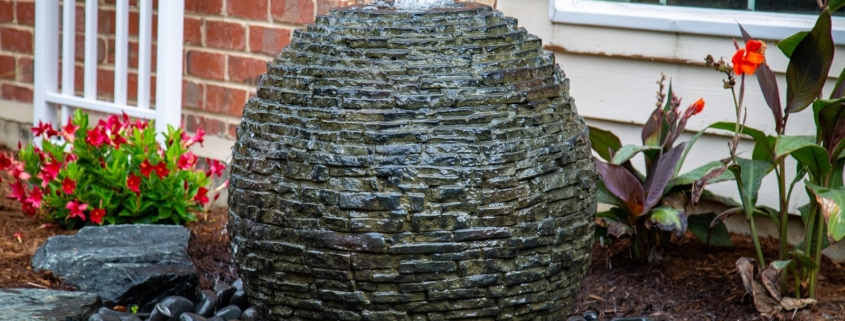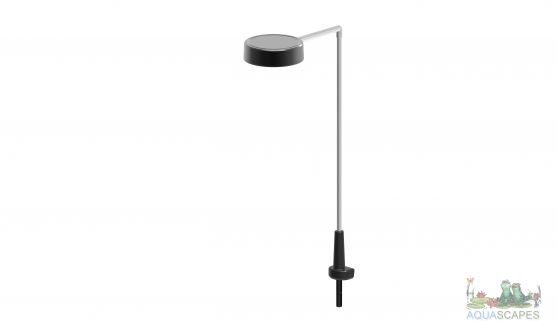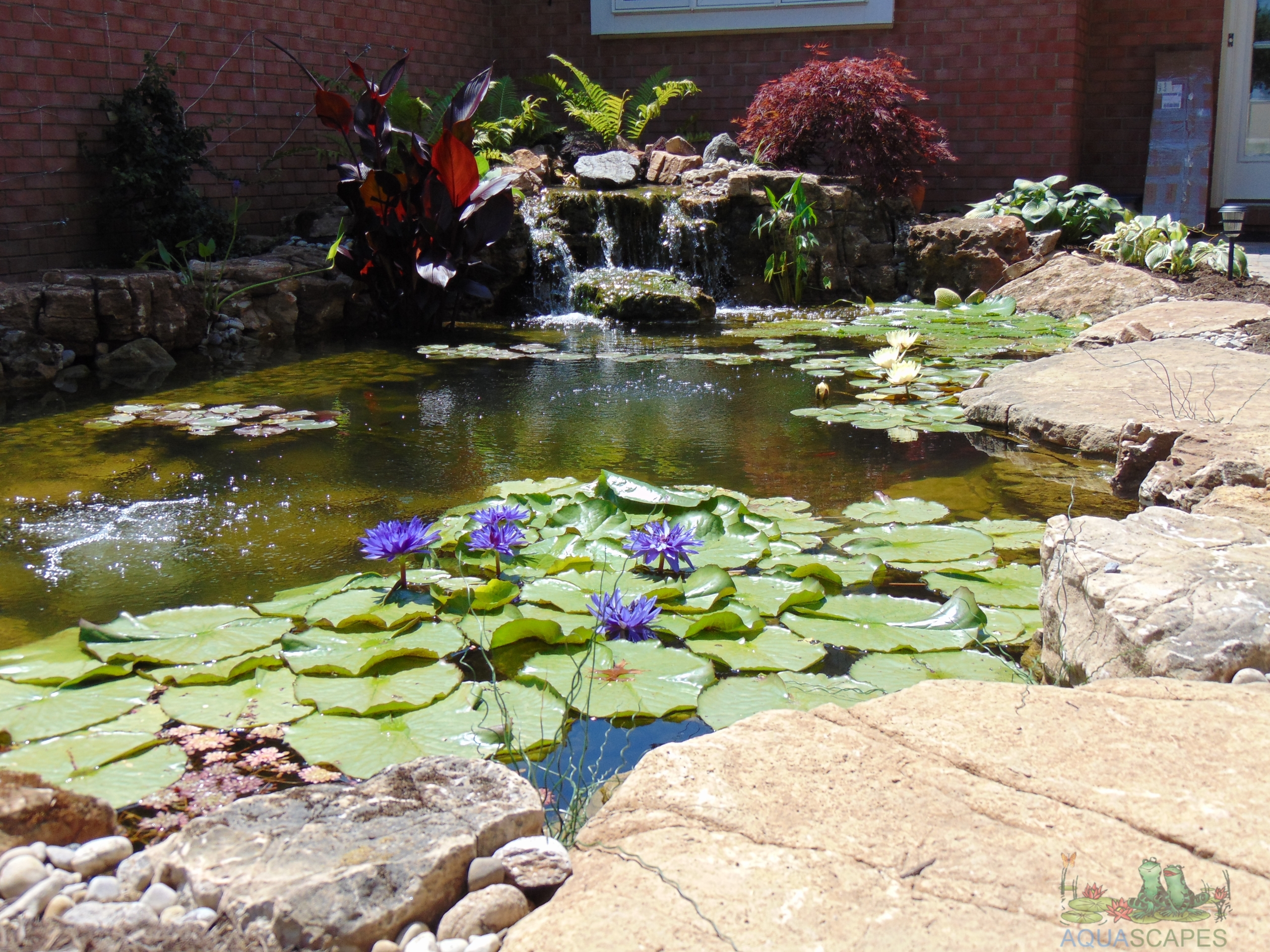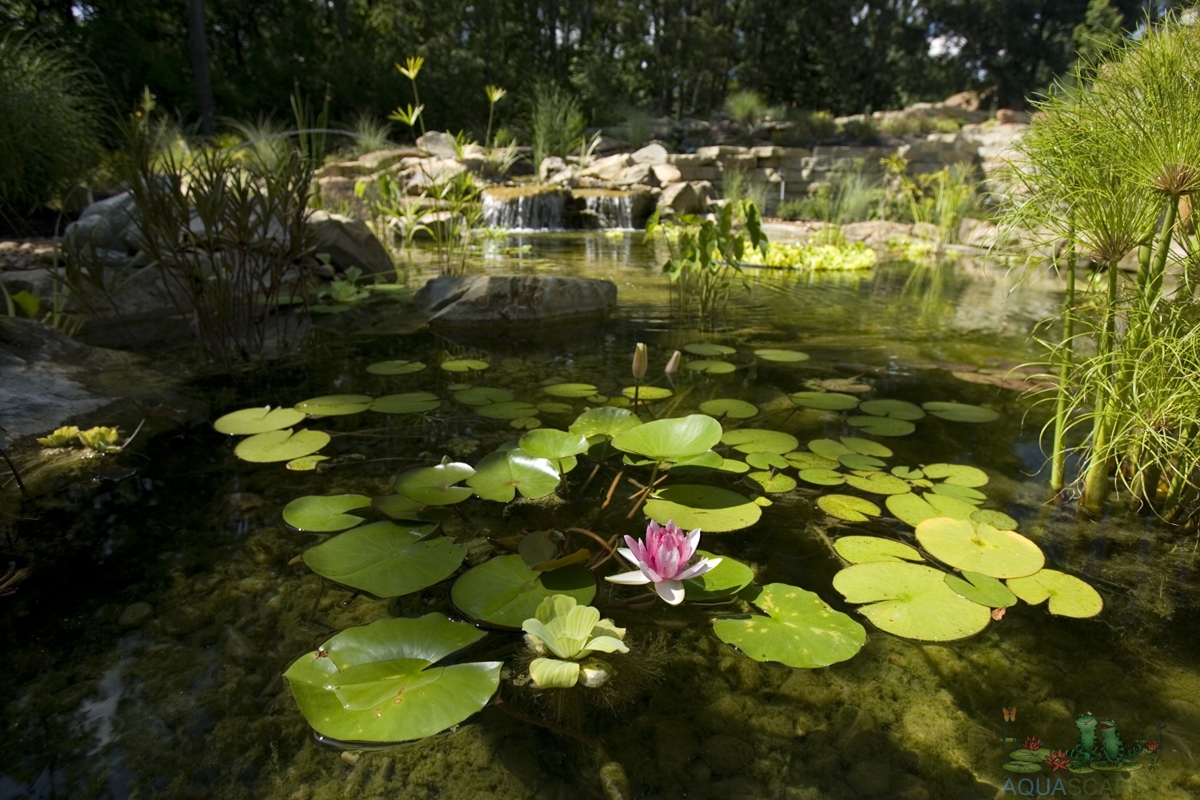How To Choose The Correct Pond Pump
Choosing a pump for your pond or fountain is a crucial step to ensure you maintain proper water movement. Failure to keep the water adequately circulated can result in stagnation, algae buildup, and mosquitoes. In addition, if you have fish, plants, or other aquatic life in your pond, you must keep the water healthy by evenly distributing the oxygen levels and other nutrients.
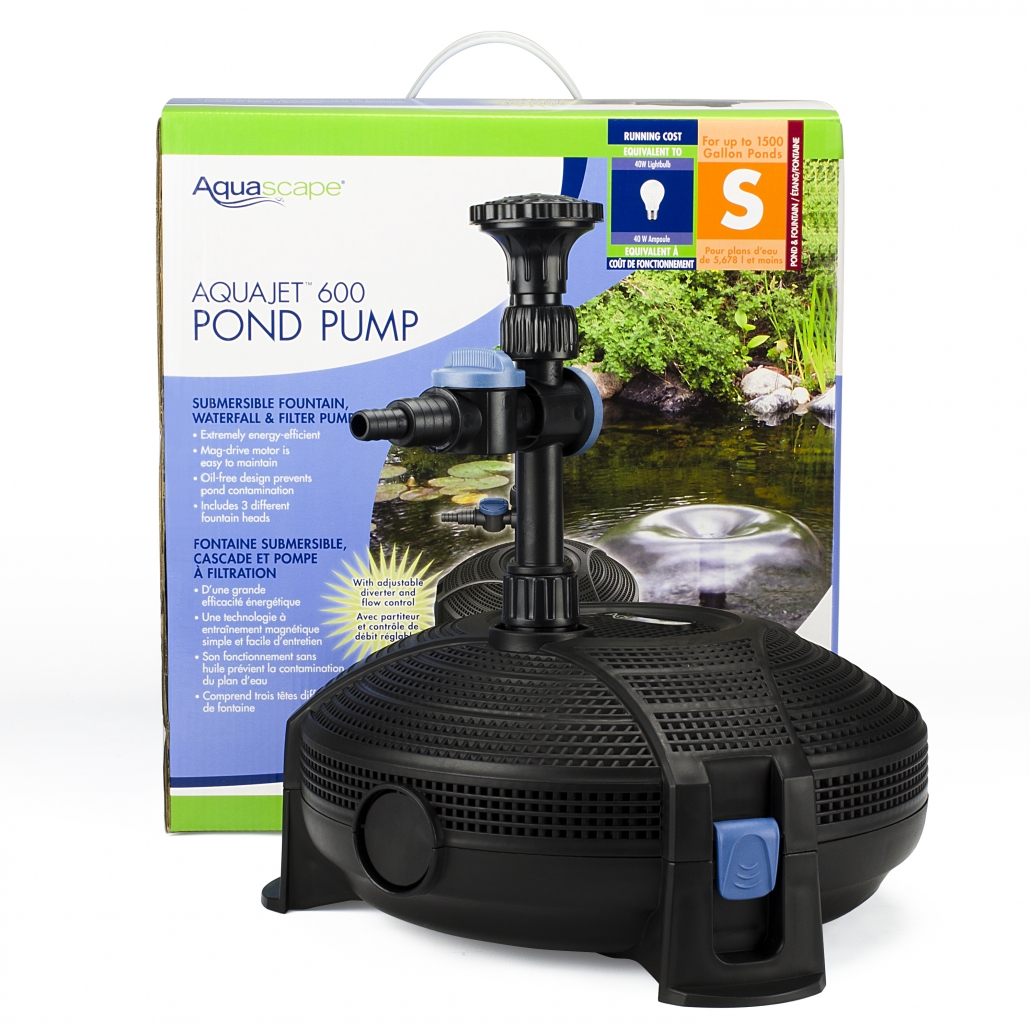
Types of Pond Water Pumps
There are two main types of pond water pumps: submersible and external (out-of-pond), also known as centrifugal pumps. Depending on the application, each pump offers specific advantages.
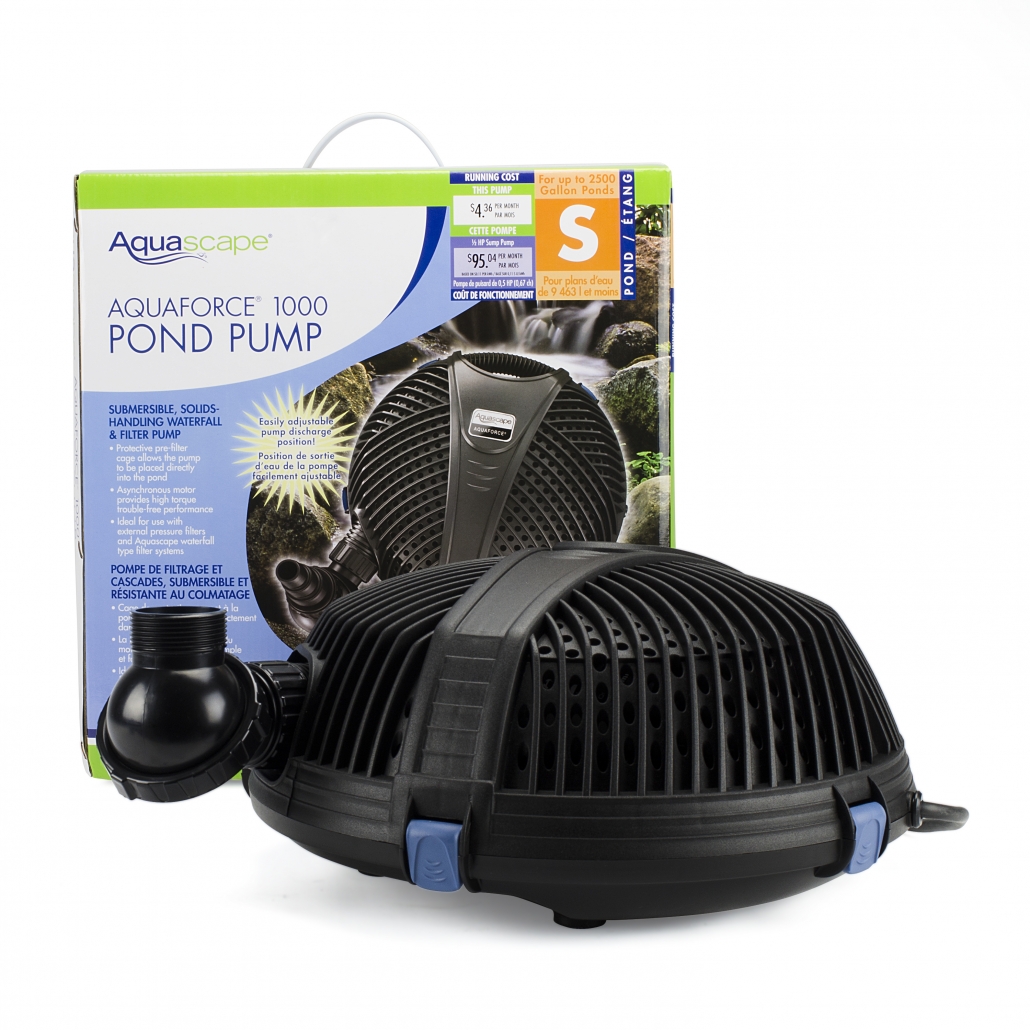
Submersible Pond Pumps
Submersible pumps are designed to be fully submerged underwater at the deepest part of the pond. They are placed directly into your pond or in a skimmer box or pond vault. Submersible pumps range in size from 50 to 5,000 gallons per hour. They are easy to install and are sometimes a more economical solution for smaller ponds (up to 1000 gallons of water). They are also quiet and can also be used to drain your pond. If you have fish or other aquatic life in your pond, you may want to consider a model that does not use oil because there is a danger of the pump seal breaking and oil coolant leaking into the water.
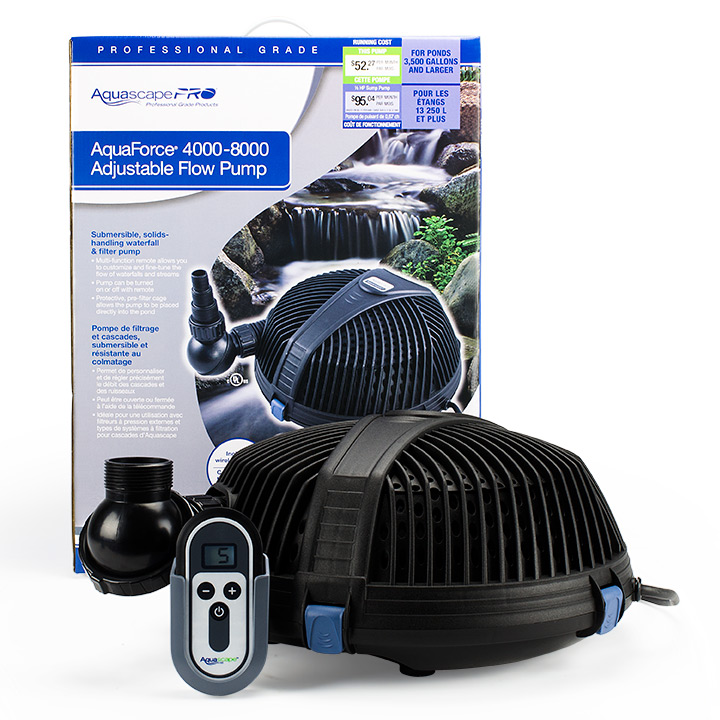
Centrifugal Pond Pumps
External or centrifugal pond pumps are a reliable, energy-efficient option. They are installed in a dry location near your pond. External pond water pumps are suitable for larger ponds (over 1000 gallons). Compared to a submersible pump, they are typically louder and more complicated to install; however, they are easier to maintain.
When selecting a pond pump, it’s essential to keep in mind that pumps have different cord lengths. Ensure the cord is long enough to go through the pond and plugin far away from the water. Some electrical codes specify that the outlet for water features must be at least 6 feet away from the water. Therefore, it is recommended that you avoid using an extension cord. However, if you must use one, make sure it’s suitable for outdoor use and plugged into a ground fault circuit interrupter (GFCI) so that it will immediately shut off if there is an overload.
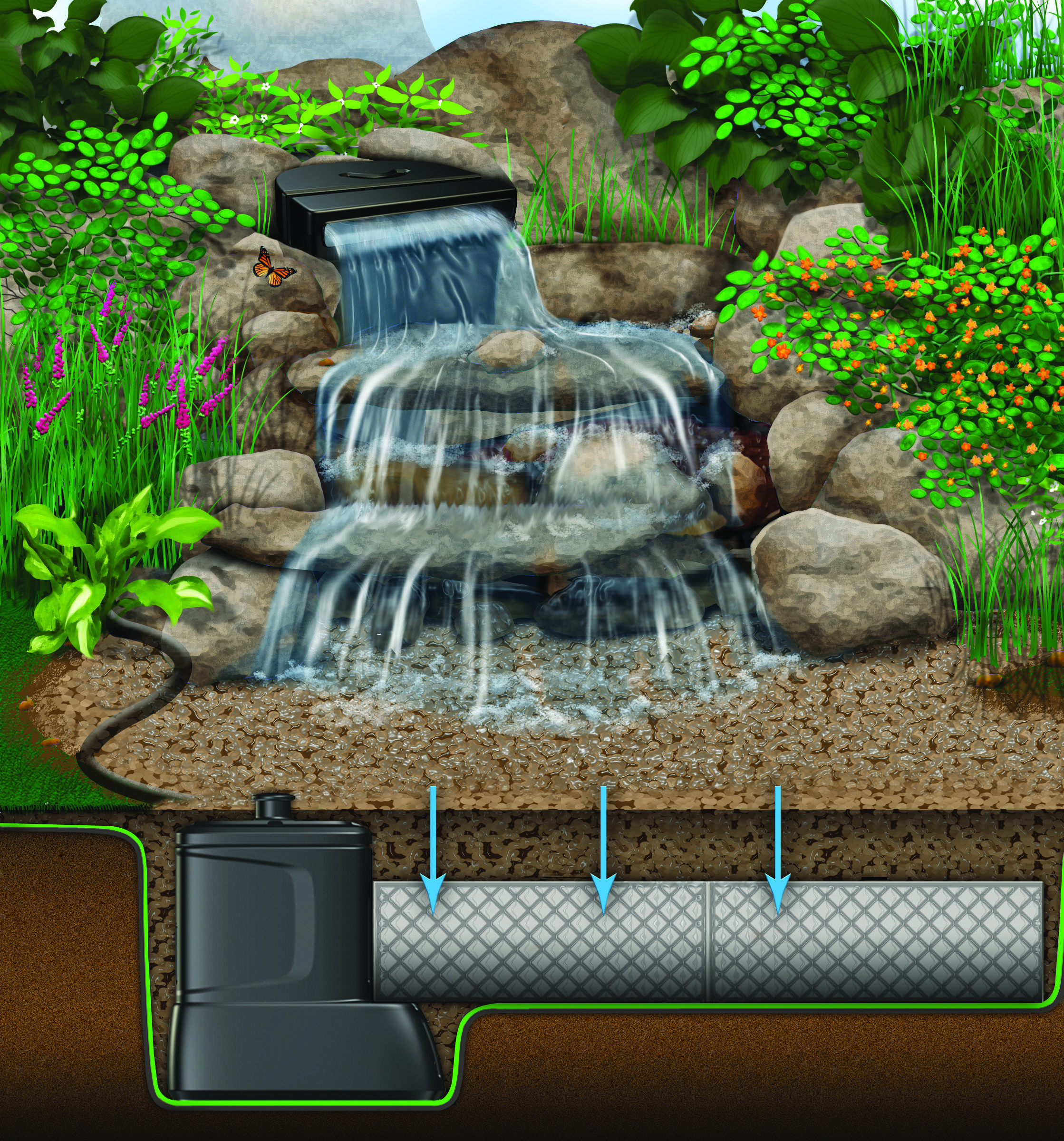
How to Size a Fountain or Pond Pump
Pond pumps are sized by gallons per hour (GPH) at one foot of lift or height. Larger capacity pumps are rated by horsepower (HP). To determine the size pond pump, first, you need to calculate the volume of water in the pond. To calculate the volume of water in gallons, multiply the length x width x average depth x 7.5.
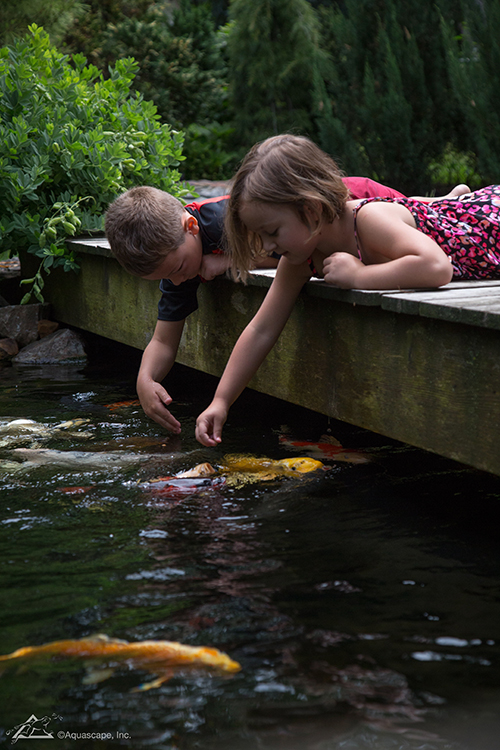
Water Circulation Factors
It is recommended that pond water is circulated at least once per hour. For example, if you have a 500-gallon pond, you need a pump that runs 500 gallons per hour at the discharge height. If your pond has a pressurized filter, you ideally want to turn the water approximately once every two hours. For example, if you have a 1000 gallon pond, you need a pond pump rated at a minimum of 500 GPH. If your pond has a skimmer or waterfall, the water should be turned approximately once every hour. Therefore, if you have an 1800 gallon pond, you will need an 1800 GPH rated pump.

Calculating Head and Lift Height
Two of the most critical measurements in sizing a pond or fountain pump are the maximum head height rating and maximum lift. Head height means the vertical height the pump raises water above the surface of the pond. The pond fountain pump’s top height can lift the water to is called “Maximum Head” or “Max Head.” The “Head” is measured straight up from the water level of the pond. Its length then measures any horizontal/diagonal flow, and 1’ of “Head” added per 10’ of horizontal/diagonal distance. To calculate the lift, you need to measure how far the water in your fountain has to travel from the pump’s location in your rush to the top of the fountain where the water comes out. Then you need to select a pump that lifts higher than that measurement. For example, if that distance is 24”, than you will need a fountain pump that lifts at least 36” tall. The “maximum lift” is the maximum height that the pump will raise the water.
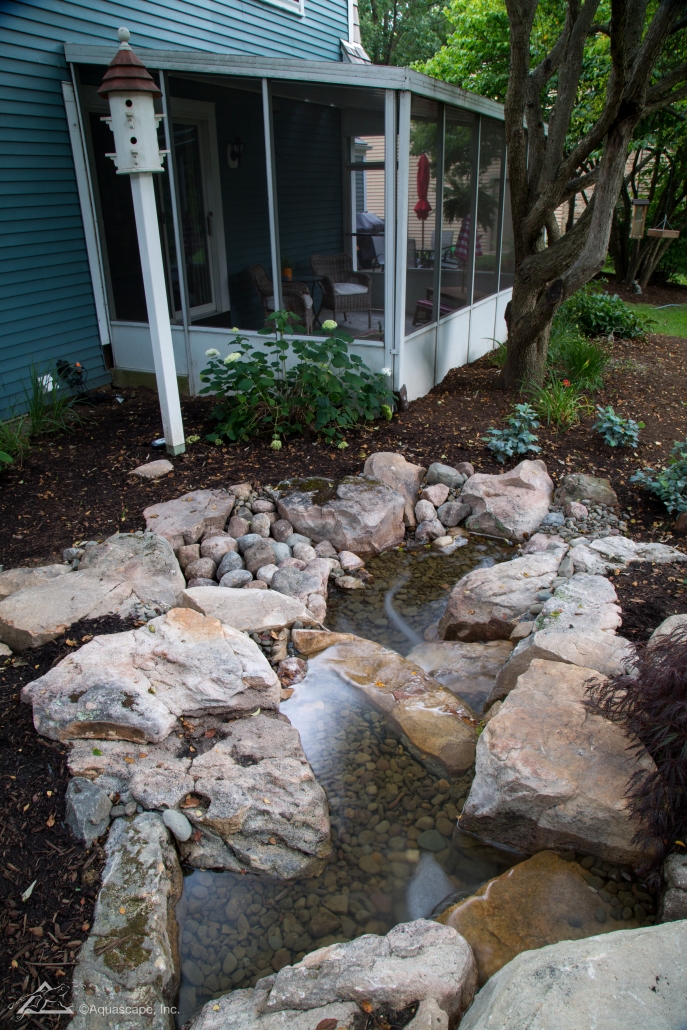
Selecting the Proper Pond Water Pump Tubing
It is also essential to use the correct tubing size because it directly affects the pond pump’s maximum lift capability. If you use smaller tubing than specified, you will limit the pump’s maximum lift and the amount of water circulated.
Choosing the right pond water pump for your pond or fountain requires careful consideration and a little upfront research. However, doing so will go a long way toward keeping your water clean and healthy and your pump operating efficiently.
Garden Water Features
Water features are a beautiful and relaxing addition to any garden. There are many different types of water features available, from simple bird baths to more elaborate fountains and ponds.
Plant Light 101
Plant lighting is important, I think we can all agree on that! Now, when it comes to lighting, you’re going to want to know a few things before you purchase. When we are talking about lighting, we’re talking about the little light you can place above your indoor or outdoor plants.
All About Aquatic Plants
Aquatic plants and their benefits
Most people are familiar with land plants, but fewer are aware of the wonders of aquatic plants. These fascinating organisms play an important role in freshwater ecosystems, providing food and shelter for fish, amphibians, and invertebrates. In addition, they help to improve water quality by absorbing nutrients and releasing oxygen into the water. Aquatic plants can also be used to beautify ponds and aquariums. Whether you’re a seasoned gardener or a complete novice, planting a few aquatic plants in your tank can add a splash of color and life to your home. So why not give these unique creatures a try? You might be surprised at how much you enjoy watching them grow and thrive.
Some interesting facts about water plants
While most plants rely on the process of photosynthesis to convert sunlight into energy, aquatic plants have evolved to live primarily in water. As a result, they have adapted in a number of ways to survive in their underwater environment. For example, many aquatic plants are able to absorb nutrients directly from the water through their leaves. In addition, plants typically have very strong roots that anchor them to the bottom of a body of water. This allows them to withstand the current and also prevents them from being pulled up by fish or other animals. While they may not be as flashy as some of their land-dwelling counterparts, aquatic plants play an essential role in the ecosystem and are fascinating creatures in their own right.
Different types of aquatic plants
There are three main types of aquatic plants: floating, emergent, and submerged. Floating plants are those that, well, float on the surface of the water. This type of aquatic plant is often used to provide shade and shelter for fish. Emergent plants are those that grow in shallow water with their roots anchored in the mud beneath. Submerged plants are those that grow entirely underwater. This type of aquatic plant is often used to help oxygenate the water. Aquatic plants play an important role in maintaining a healthy ecosystem. They provide food and shelter for fish, help to regulate water temperature, and prevent soil erosion. In short, they’re pretty important!
How to care for aquatic plants
Like all plants, aquatic plants need sunlight and nutrients to grow. However, they have a few unique requirements that must be met in order to thrive. First, it is important to choose the right location for your plants. They should be placed in an area where they will receive at least six hours of sunlight per day. Second, aquatic plants need to be planted in soil that is specifically designed for them. This type of soil is typically sold in pet stores or garden centers. Third, aquatic plants require a consistent water supply. A slowly dripping faucet or an automatic water delivery system can help to ensure that they always have enough water. By following these simple tips, you can keep your aquatic plants healthy and happy for years to come.
Recipes that use plants as ingredients
Nibble on this bit of information: did you know that not only are aquatic plants nutritious, but they’re also delicious? While you may not be used to seeing them as part of your nightly meal, there’s no reason why they can’t make a splash (pun intended) in your kitchen. Here are a few recipes to get you started:
– Watercress and arugula salad with lemon vinaigrette: This light and refreshing salad is perfect for a summer day. The bitterness of the arugula is offset by the sweetness of the watercress, while the lemon vinaigrette ties everything together.
– Seaweed sushi rolls: If you’re looking for a healthier alternative to traditional sushi, give seaweed rolls a try. They’re easy to make and packed with nutrients.
– Pondweed Parmesan: Pondweed is a nutrient-rich aquatic plant that has a similar taste and texture to spinach. It’s delicious when sautéed with garlic and Parmesan cheese.
So go ahead and give aquatic plants a try – your taste buds will thank you!
Now that you know a little bit more about aquatic plants and their benefits, it’s time to get your hands wet! Literally. Why not head down to your local plant nursery and pick up a few of these interesting underwater friends? And if you’re feeling really adventurous, why not try one of the recipes we’ve shared using aquatic plants as ingredients? We guarantee you won’t be disappointed.
Check out our store for all your water gardening needs! Aquascape products are Aquascape Inc. Certified.
Thanks for reading at Meyer Aquascapes! We hope you’ve enjoyed our post on garden pond design. Please leave a comment below if you liked it or have any questions. We’d love to hear from you! Thanks for stopping by!

